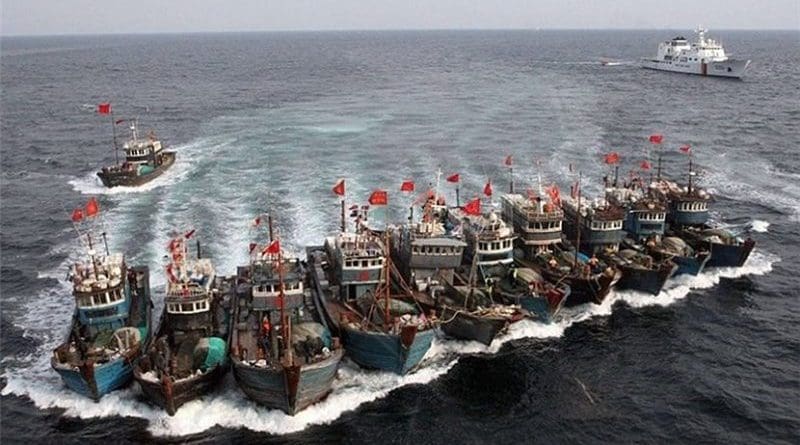Most Of China’s Seafood Imports Are Reexported
In a Policy Forum, Frank Asche and colleagues estimate that almost 80% of China’s seafood imports are processed and reexported at a large scale to other markets. Since global trade in seafood is tightly linked to environmental, economic, and social sustainability, the authors argue that China’s model hampers international efforts to preserve global fisheries and efforts to allow coastal communities to compete in global fish markets.
“Narratives that emphasize Chinese domestic demand as driving China’s role in the seafood system pay too little attention to the reexport model, which highlights the complexity of tracing seafood sustainability,” write Asche et al. “The same product can be harvested in multiple countries with different management and labor conditions and comingle in reexport data.”
Over the last several decades, China has become the world’s largest seafood producer, importer, exporter, and distant water fishing nation (i.e., catching fish in international waters and within other countries’ economic zones).
According to Asche et al. this dominance in production and trade has created several challenges for environmental and economic sustainability, but the data required to evaluate these issues is varied and disparate.
Here, the authors convert quantities of different product forms in imports and exports by species group and estimate apparent consumption. They find that 74.9% of China’s seafood imports are subsequently reexported to other markets. Asche et al. highlight two important policy implications for seafood sustainability, one of which is traceability within the supply chain, and argue for oceans policy reform to sustain coastal fishing communities and the fish stocks they rely upon in a globalized seafood economy.
“Ultimately, maintaining seafood processing locally contributes to social sustainability of fisheries, and social sustainability, in turn, mutually reinforces economic and economic and ecological sustainability,” they write.

